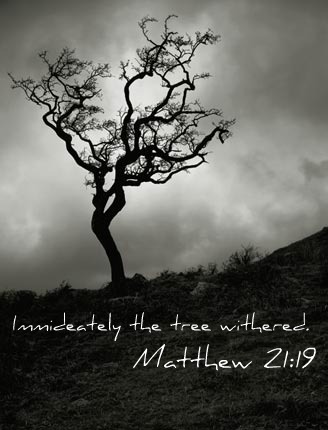
(For the audio version of this blog, please visit: http://brothersinchristcmf.org/wp-content/uploads/2022/03/Mass-Blog-for-the-3rd-Sunday-in-Lent-2022.mp3)
Jesus must have loved figs. One day he was so hungry for them that when he saw a fig tree, he approached it for a snack (Mat 21:18-22). It had nothing to give him, so he cursed it. It soon withered, and therefore lost its opportunity to serve future generations hungry for nourishment.
Humanity has had a complex history with fig trees, and trees in general, considering Adam & Eve used fig leaves to hide their shame after eating the forbidden fruit of the knowledge tree they hoped would feed their selfish pride. Bearing fruit for others has been a challenge for us ever since.
That infertility motivated Jesus’ mission to keep humanity from disappearing. It even inspired his parable we read this Sunday from Luke’s gospel (Lk 13:1-9). As long as we still had Adam & Eve’s hunger to know what it’s like to be God, Jesus might have thought, why not tell them a story to satisfy it. Its moral puts us in the Savior’s sandals. In it, God the Father is an orchard owner and Jesus is his gardener. In this account, the owner—like Jesus and HIS tree—finds nothing but leaves on his fig tree.
“Cut it down. Why should it exhaust the soil?,’ the owner tells the gardener.
But we are invited to put ourselves in Jesus’s position as God’s nurturer of humanity:
‘Sir, leave it for this year also, and I shall cultivate the ground around it and fertilize it; it may bear fruit in the future. If not you can cut it down.’”
“Are you willing to bear that burden,” the owner in this parable might have asked the gardener. Jesus lived the answer he’d have given: “I AM!”
That answer echoes through Sunday’s first reading (Ex 3:1-8a, 13-15) which involves another plant whose fruit God actually intended for human consumption. That fruit is the light that grew from the burning bush God used to tell Moses I AM. Moses channeled its flame of self-awareness in nurturing the fruit of humanity’s long-dormant family tree. He answered God’s call with its name: “HERE I AM.”
That answer is also the name of one of our most beloved hymns: “Here I am, Lord.” Through it, we identify ourselves as God’s children and continue the work of our Brother and gardener:
Here I am, Lord
Is it I, Lord?
I have heard You calling in the night
I will go, Lord
If You lead me
I will hold Your people in my heart
As the soil of our world becomes more and more exhausted by the weeds of war and sin (that too many of us confuse with crops), time is running short to offer God something from our family tree to satisfy a King-sized hunger.
–Tom Andel